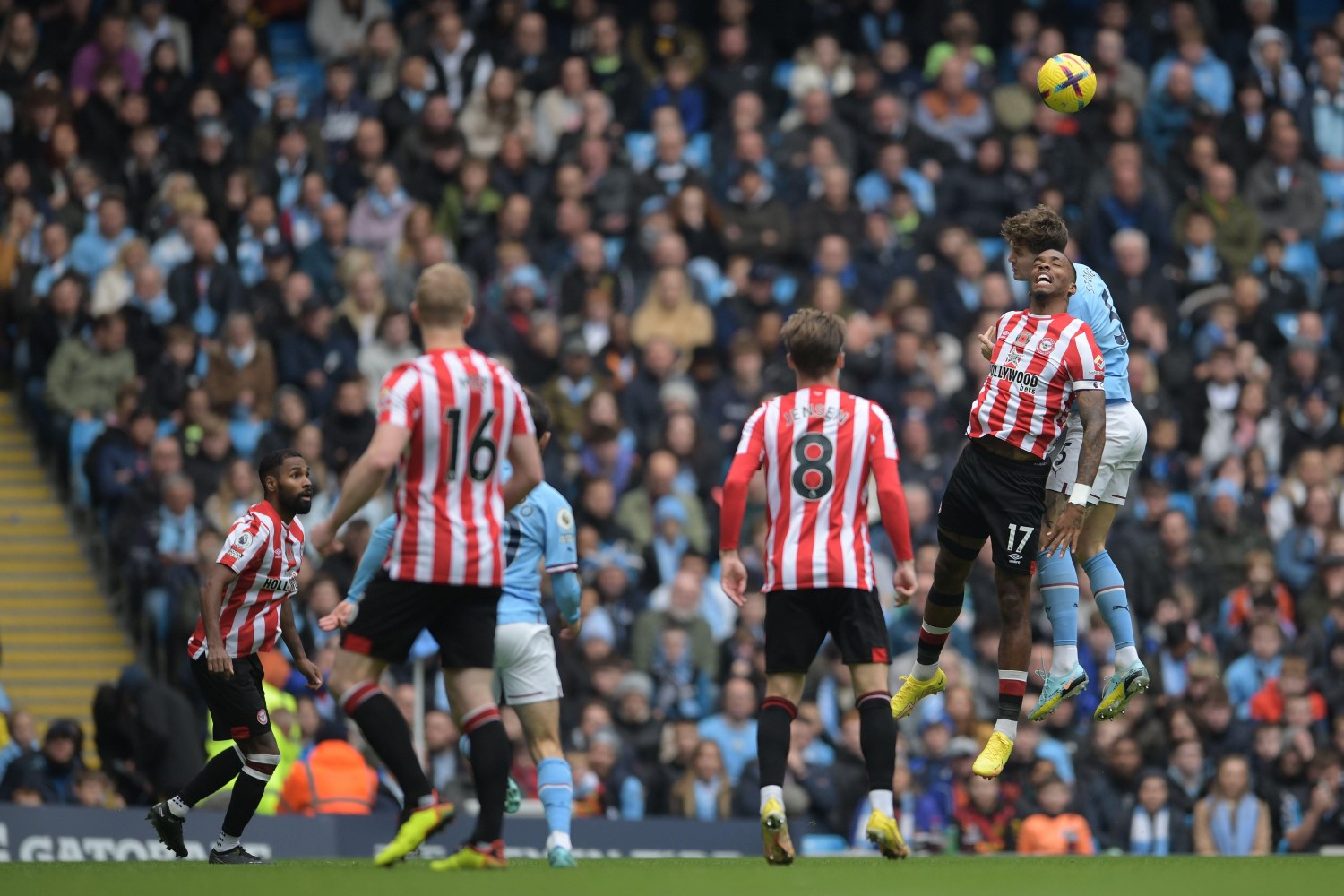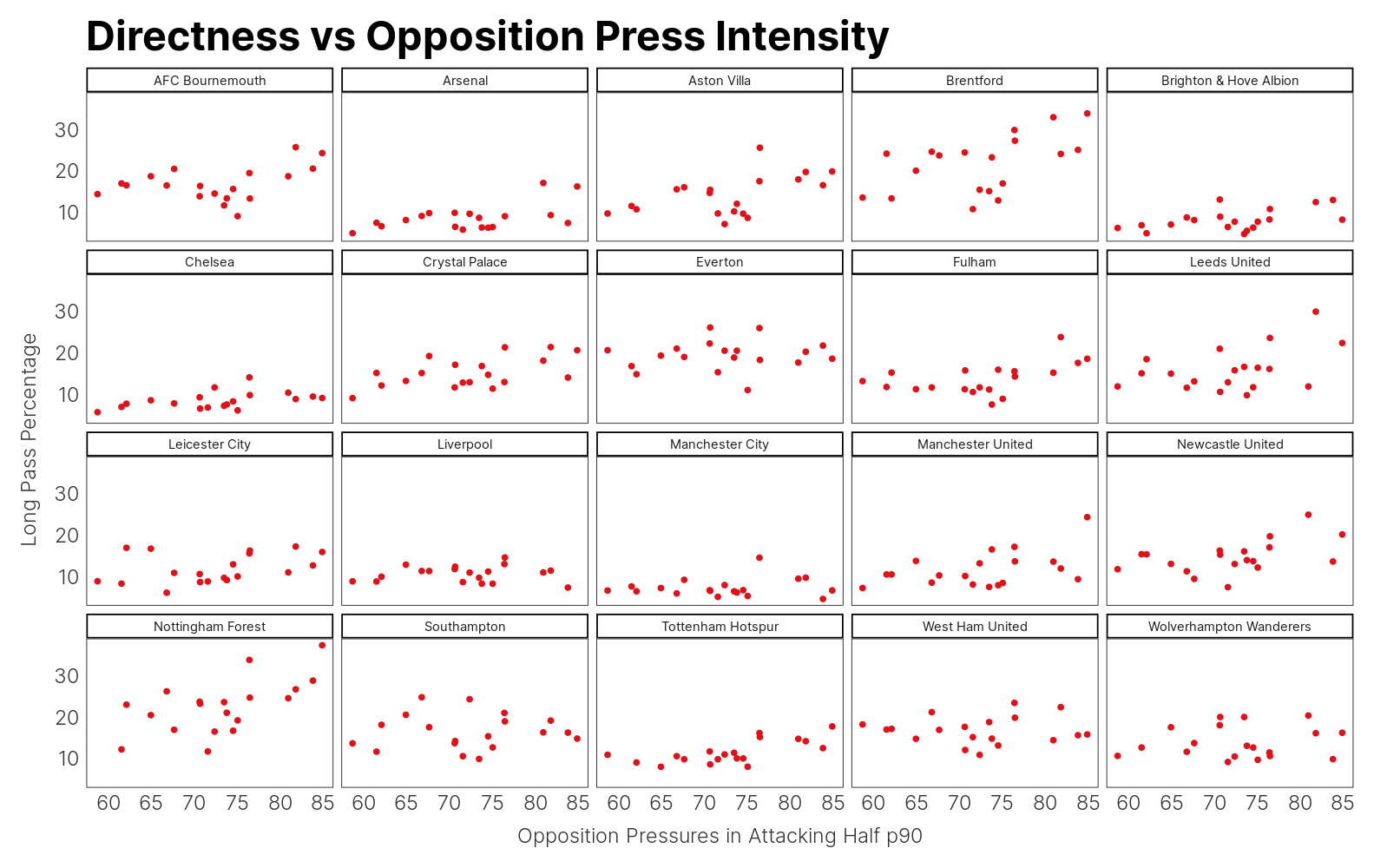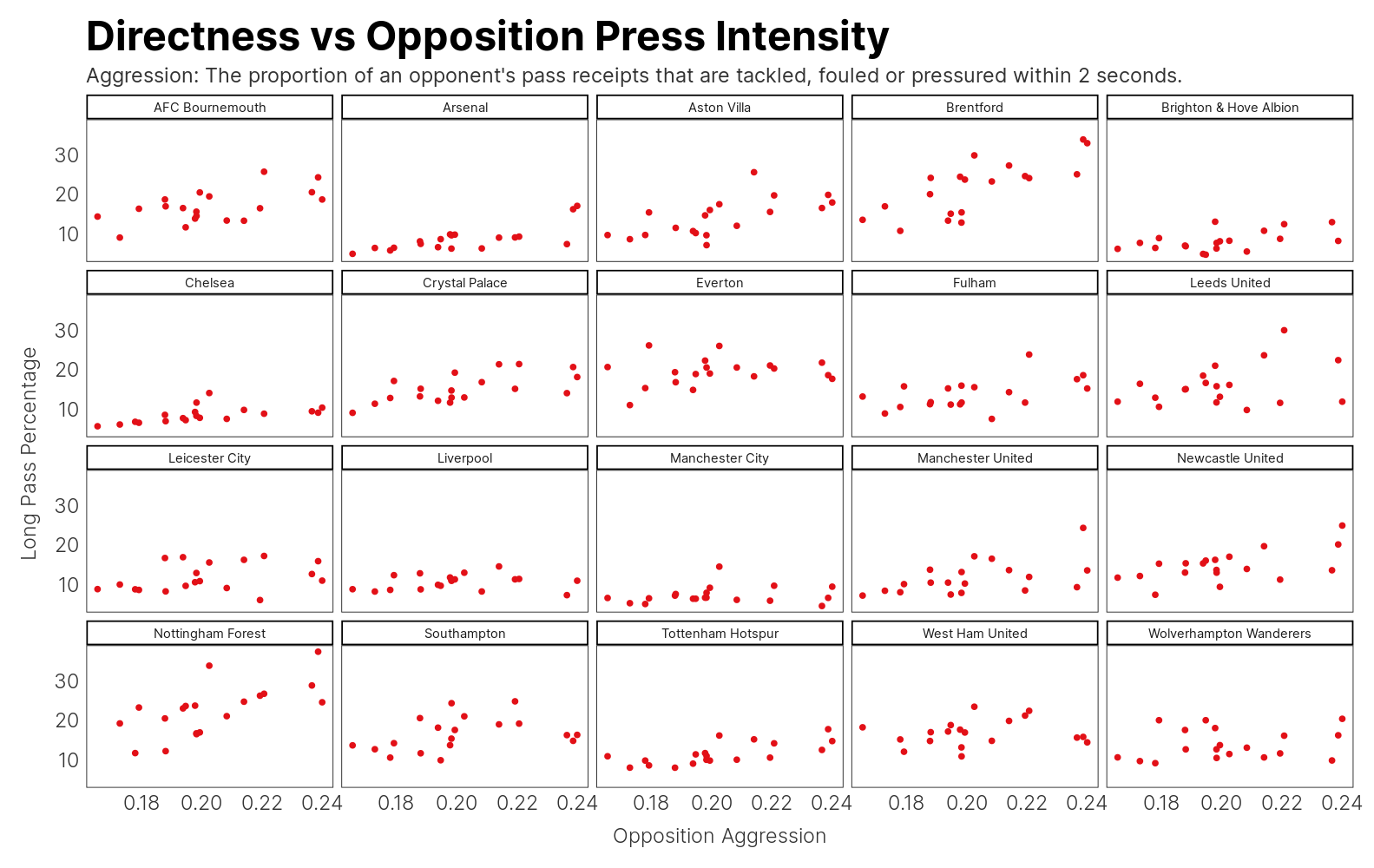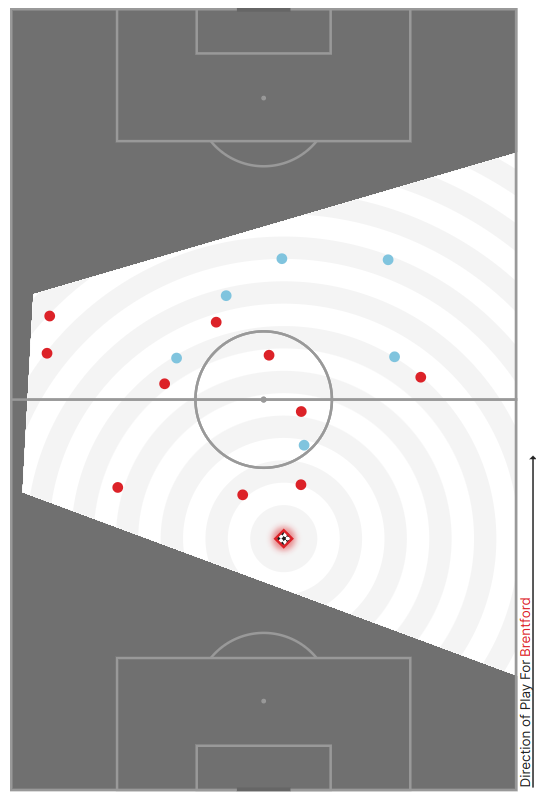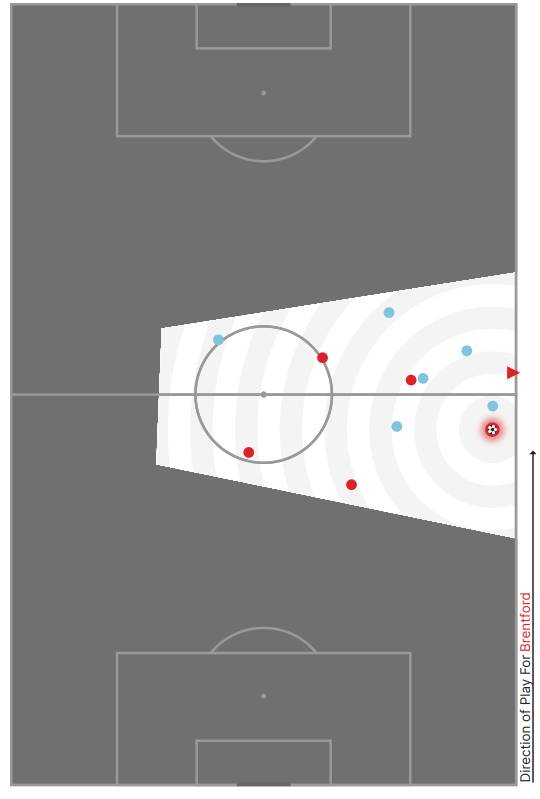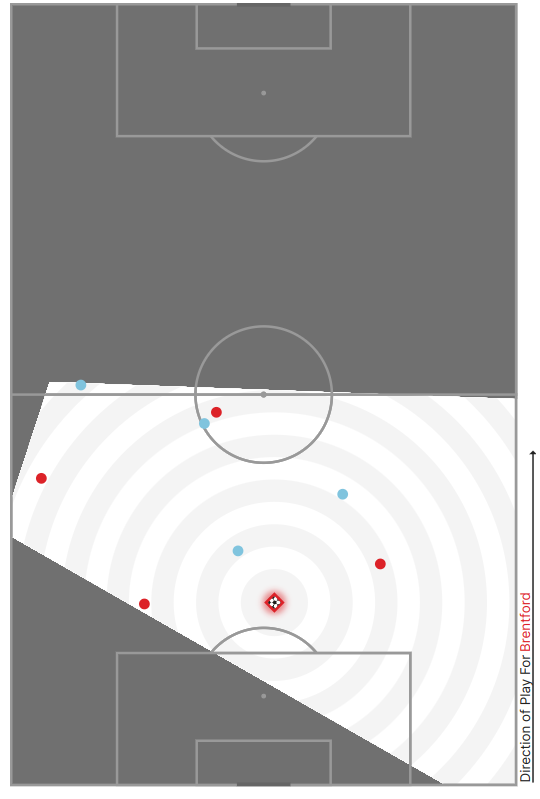Bob Paisley once said, “It’s not about the long ball or the short ball, it’s about the right ball.” But, as generations of coaches continue to innovate, the tactical principles en vogue seem to increasingly move away from the long ball and Route One football.
This article will investigate whether there is merit to the casting aside of the target man, setting realistic expectations for those that do play Route One football, and an analysis of a team at the top level who do Route One well: Brentford.
First, let’s look at who HOPS says are the best aerial strikers in the world should you want to play airballs to a big man. In case you missed the launch article, HOPS is our new way to measure aerial ability – that is, how often we’d expect a player to be able to win an aerial duel against an average player. When you look at HOPS, presented on a scale of 0 to 1, a score of 0.75 would mean that the player would be expected to win an aerial duel against an average player 75% of the time. A score of 0.35 would mean we'd expect the player to win the duel 35% of the time.
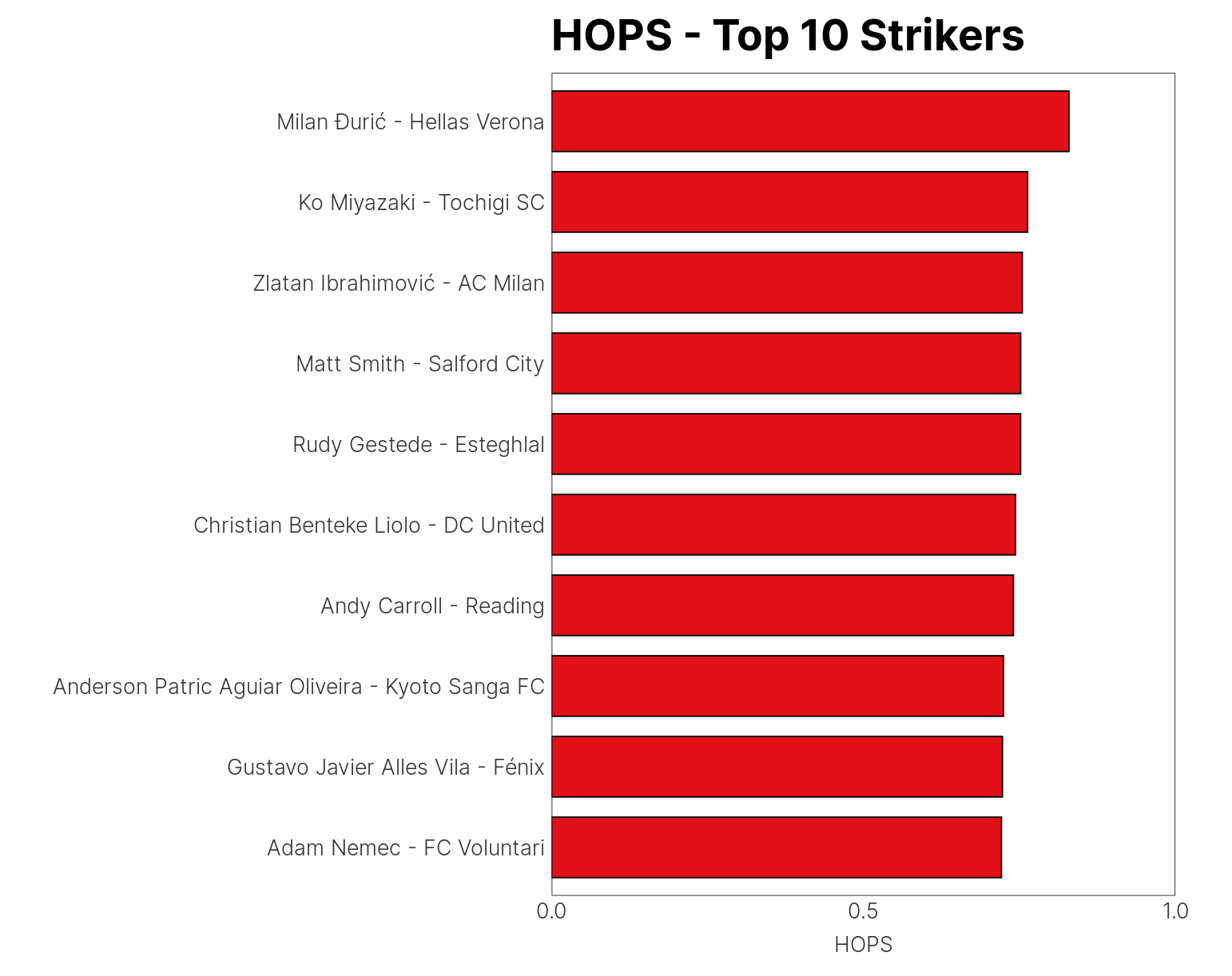
Some of Route One’s finest make the list. Zlatan Ibrahimović in 3rd place is a reminder of just how special he was considering all the other things he’s capable of aside from winning tons of headers. Miyazaki in 2nd is hiding away in the J2 League.
But Top of the HOPS is Hellas Verona’s Milan Đurić: clear of the pack as the best aerial-winning forward in the world.
Route One Expectations
Though HOPS only captures a player’s ability to win an aerial duel and not their ability to head the ball accurately to a teammate to retain it, we can make a pretty strong argument with this evidence that Đurić would be the best striker you could ask for if you were planning to keep hoofing the ball upfield with the hope that it sticks. His HOPS score of 0.83 suggests he beats an average player in the air 83% of the time. Playing the numbers game, if you knew you had a forward that would win the aerial duel 8/10 times, you’d be silly not to play the long diagonals to his forehead?
Well, not quite. In reality, Đurić is duelling against centre backs, who are better in the air than the average player. The average HOPS score for a Serie A centre back in 2022/23 was 0.65. If we use the HOPS model to predict the outcome of a duel between Đurić and Mr Average Serie A Centre Back, the model predicts a Đurić win only 73% of the time.
Now we’re down to 7/10. That’s pretty good, you might think, but that’s only the likelihood of him winning the header. He still has to head it to a teammate, or into space where he could collect it himself. Headed passes in the attacking or defensive third in Serie A last season were completed at a rate of 62%. For arguments sake let’s say Đurić wins the header 73% of the time, and that header finds a teammate 62% of the time. Quick maths (0.73*0.62) says that going long to Đurić would only retain possession 45% of the time. Could be worse, but could be better.
But there’s even more to this still.
Having Milan Đurić up front is the best-case scenario. Let’s say you’ve got a 75th percentile HOPS striker up front rather than a 100th percentiler in Milan Đurić. Then the rate you’d expect them to win the long balls drops from 73% for Đurić to 40%, and retaining the ball from 45% of the time to 25%.
Route One is tough. Even in the best circumstances, playing long balls as a means of ball progression is tricky, but that doesn’t mean you can’t make it work in the right circumstances.
Analysing Brentford
Brentford have been playing fast direct football in possession this season. Only Forest have a higher average speed (m/s) for possessions ending in a shot.
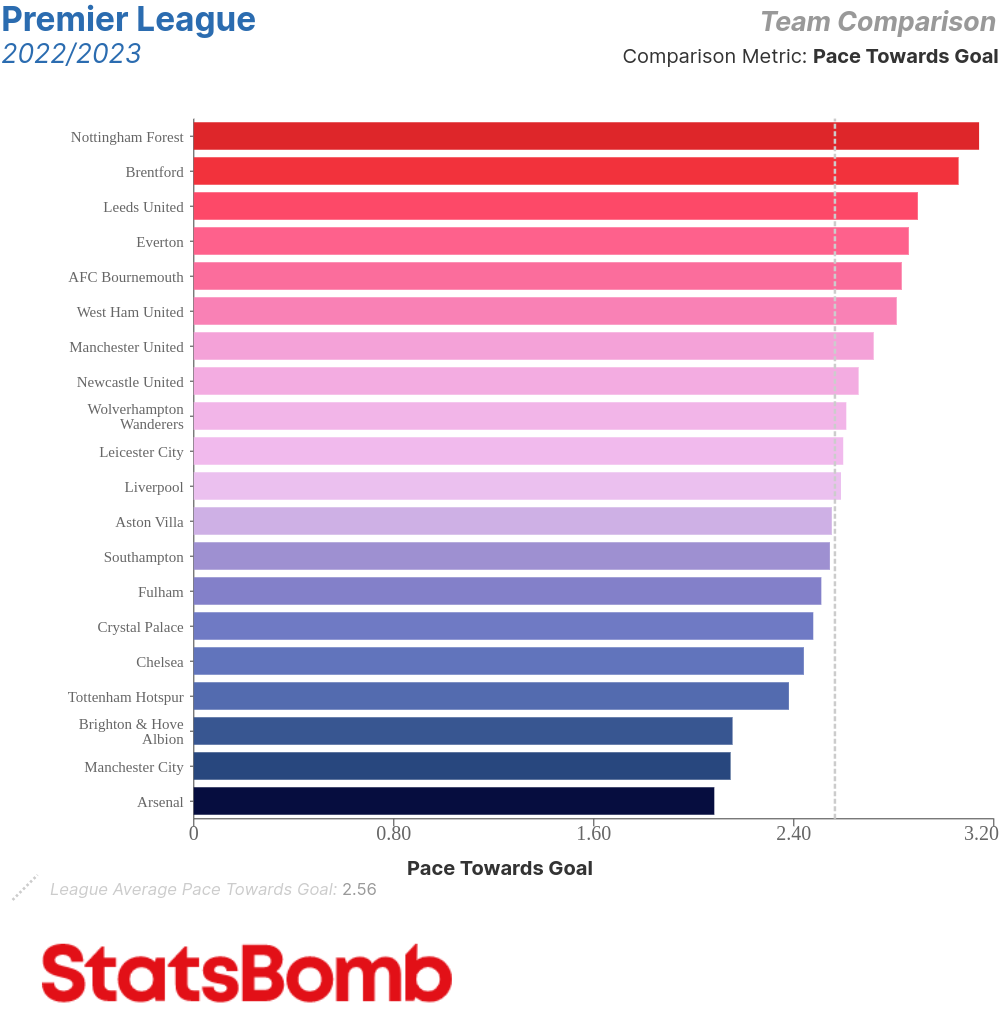
As you’d expect they’ve been very pragmatic with their approach varying it depending on the opponents. There are times this season when Brentford have been very Route One and times when they’ve been the opposite. Look at what happens to the proportion of their passes that are long balls (high passes ≥ 35 yards) when they play teams who don’t allow the opposition to play out from the back. Brentford go long against the high press but play out from the back against teams which let them.
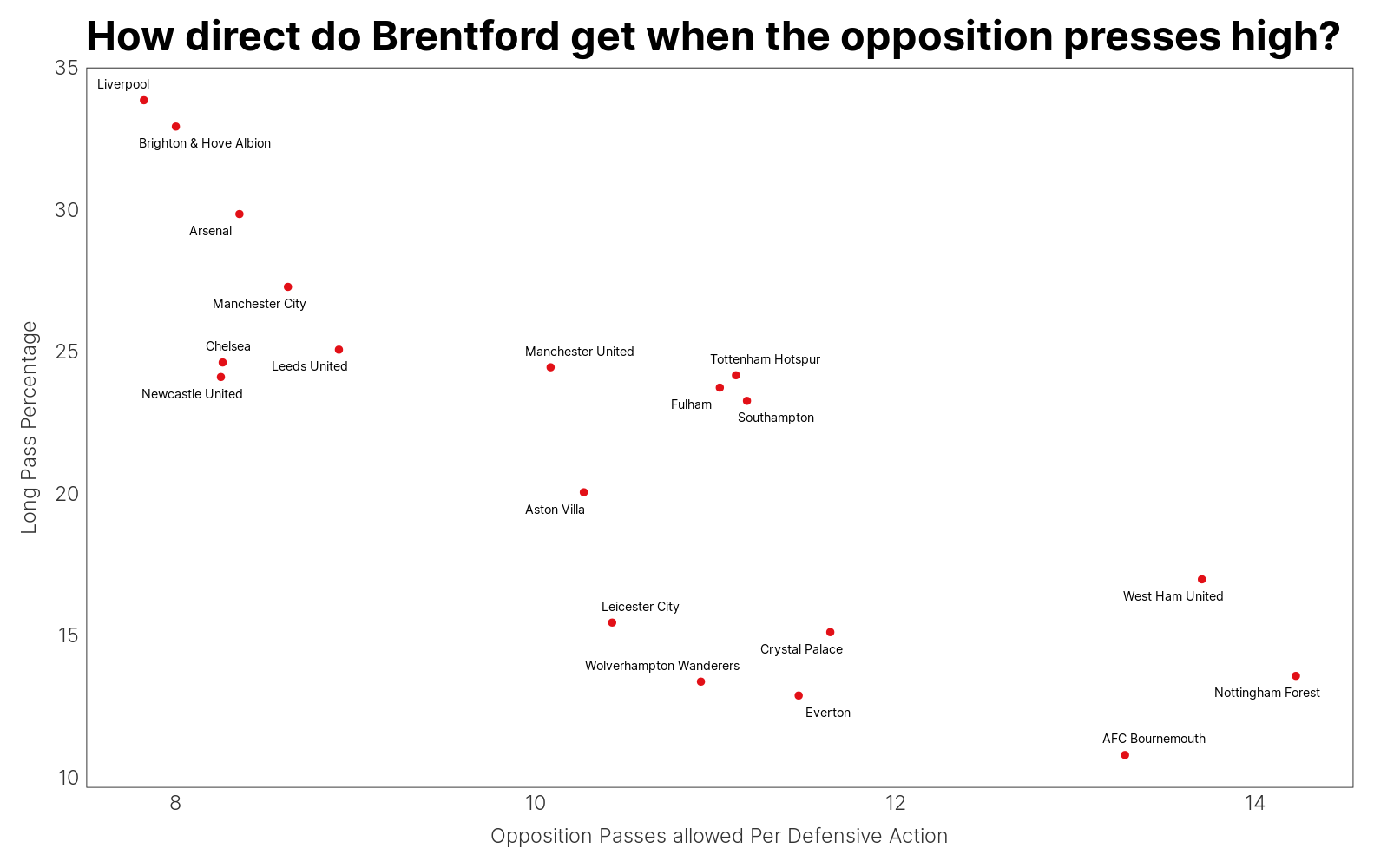
But how do we know that Brentford are choosing to vary their approach in buildup and not just being forced into long passes when the opposition executes an effective press? Ultimately we can’t be 100% sure if it's a choice or a consequence and in reality, it's probably a mixture, but we can look at other teams to see if this trend persists more generally.
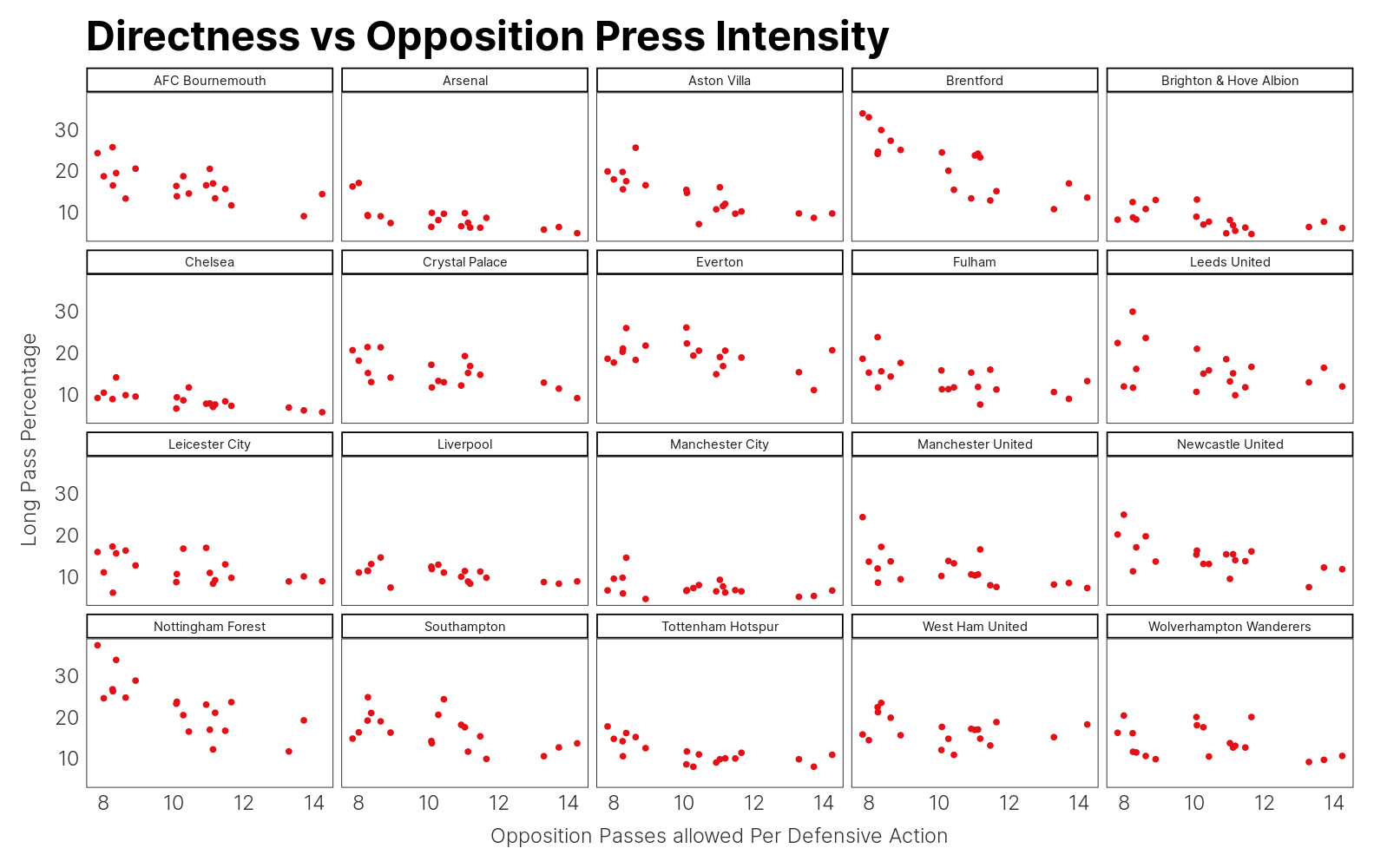
Across the league, there’s definitely a slight downward slope for most teams but Brentford along with Forest are clearly outliers which points towards them doing something different. This isn’t that surprising - I think most would agree that Thomas Frank and Steve Cooper are flexible pragmatic managers. Compare them to teams like Brighton and West Ham who are a lot more stubborn in their approach. Yes, it looks like they play slightly longer passes against good pressing teams but it's minimal - there’s still an unwavering commitment to their style in possession - unlike Brentford.
We’ve used PPDA as our proxy for “which teams don’t let you play out from the back” but we can check other proxies and see the same trends.
Making Route One Work
So how have Brentford made direct football work for them this season despite it not looking like a great approach on paper? Let's look at their away win against Manchester City earlier in the season for clues.
First things first, Ivan Toney is key for them. For Route One to work you need something to aim at and Brentford aim for Toney. Now Toney is no Đurić when it comes to aerial prowess but he’s no slouch either. He’s not the tallest at 1.79m but he has a fantastic leap on him which enables him to achieve a HOPS score of 0.65 which is the 97th percentile for his position. The only striker to have a higher rating in the Premier League is Kieffer Moore. So whilst Toney isn’t one of the best in the world at heading you can still bet on him to win a header or two.
Headline Numbers
Let's look at some aggregate numbers from the match. Brentford attempted 4 shots from possessions involving an aerial duel for a total xG of 1.02. They attempted 238 passes and 60 of them were long high balls so 1 in 4 passes got lumped up. How many did they aim at Toney? A lot.
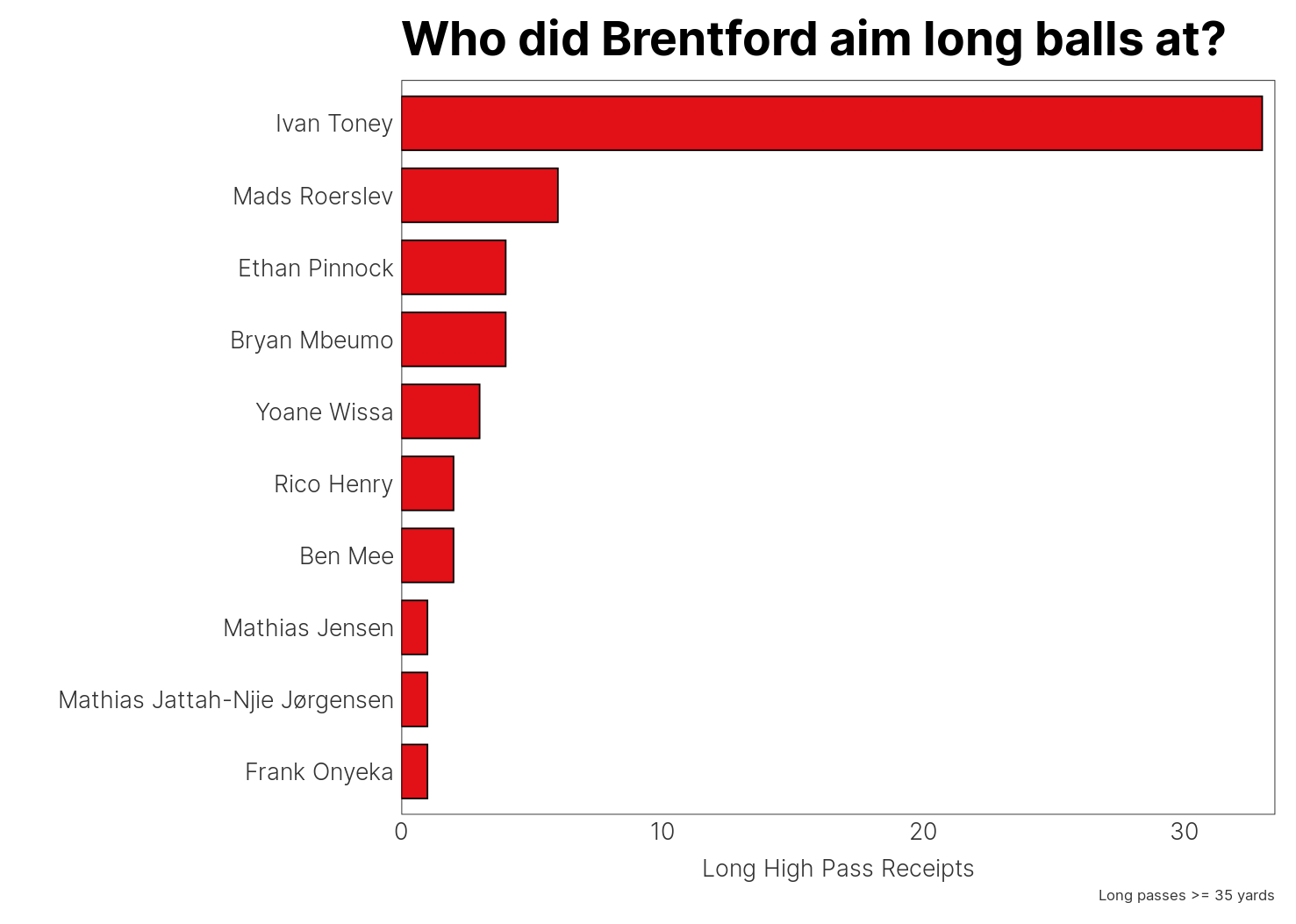
Where did those long passes occur?
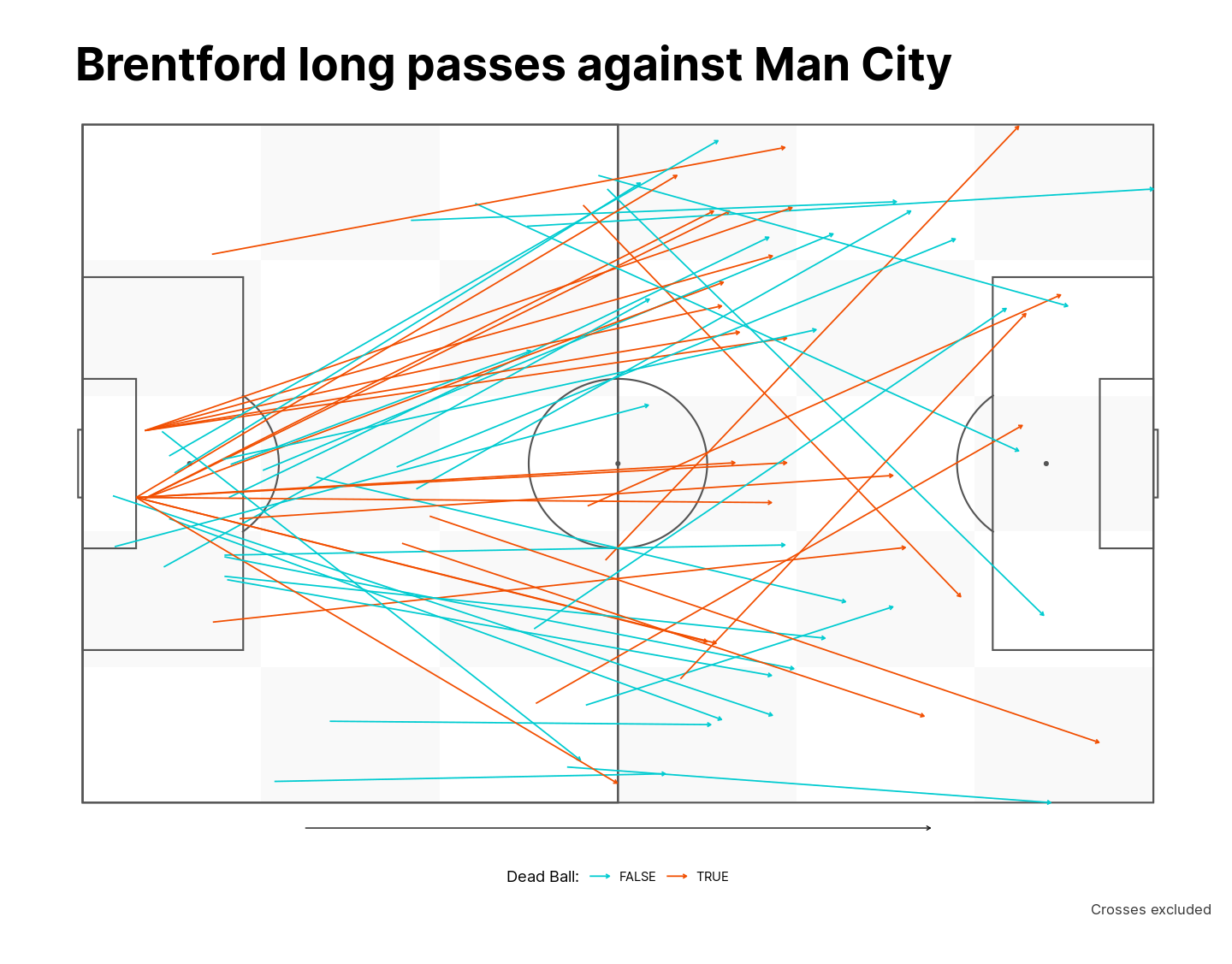
Almost half of Brentford’s long passes came from dead ball situations. Raya kicked long all game and the bulk of the long passes came from him. Whenever Brentford won a free kick they pushed the centre backs forward and ran a routine. Also, the dead balls almost always went to the left side towards Toney.
Toney competed in 19 aerial duels during the match, 16 of them were long balls into him. Toney won 9 of the 19 duels giving him a win rate of 47%. We can use HOPS to see how many duels we should have expected Toney to win given the players he duelled against. The model predicts 8.83 so Brentford basically got what they could have expected from Toney in this match.
City are absolutely stacked with aerial prowess so it's no surprise the model only expects him to win 8 of the 19 duels. Here’s a breakdown of who Toney duelled against:
| Opponent | Aerial Duels |
| Aymeric Laporte | 6 |
| Manuel Akanji | 4 |
| John Stones | 3 |
| Rodri | 3 |
| João Cancelo | 1 |
| Erling Håland | 1 |
| Philip Foden | 1 |
The only players he’s favourite against are the last 3 in the table. Getting favourable matchups for aerial duels will obviously increase your likelihood of success with Route One. This is something Brentford don’t actually do that well. It's tricky with how good City’s defenders are but it's possible to switch onto Cancelo which Toney does manage once in the game and to good effect as he wins the duel comfortably. Brentford try to get that matchup a bit more in the 2nd half but it's tricky to get the long pass accurate enough. I’d have liked to see them try it more but it's possible they don’t like the defensive structure they end up with if they lose the ball with Toney having to swap sides to move onto Cancelo.
The Execution
Now let's look at the video to see how Brentford execute Route One. First off they set the tone early running a routine from kick-off where Raya lumps it forward for Toney. Toney beats Rodri in the air and finds Rico Henry who’s supporting him. They play quick combinations to get the ball into the box but nothing comes of it. Within the first minute, they played 3 long balls, below are the freeze frames at the moment of each pass. On each occasion there’s at least one short pass available to the actor highlighting the fact Brentford are making choices with these long balls, they’re not being forced into them by City’s press - Route One is the game plan.
Brentford don’t actually play that many long balls in open play and the main reason for this is when they’re defending Toney usually drops back onto Rodri. When Brentford do win the ball back Toney isn’t high enough for them to play a long ball. Instead of hoofing it to nobody they look for short fast combinations within the close structure they find themselves in. Here’s a nice example of a freeze frame showing their structure (Toney is the highest Brentford player on the left side) and the passing combination they work out of that structure.
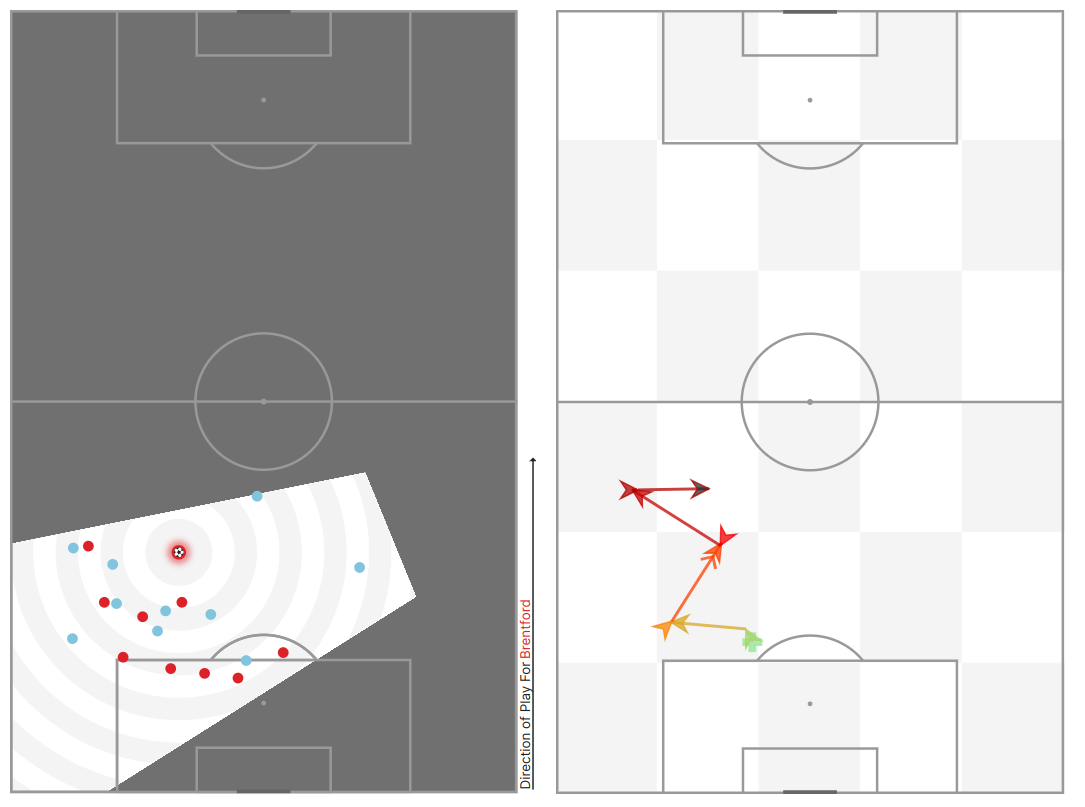
They could leave Toney higher when defending to give them the long ball option in open play but this comes at a trade-off with defensive solidity. The other drawback is that Toney would be isolated up front and one of the key aspects to making Route One work is making sure you have bodies around the aerial duel to pick up the 2nd ball. This is something Brentford do really well against City and it's also a reason why going long from dead ball situations is easier than open play because you have full control over the structure you provide around the duel.
The first goal is a neat example of this. Brentford win a free-kick deep in their own half. It’s hit long towards Mee on the left side of the box whilst Toney and Zanka start in offside positions in order to gain better positions for the knockdown. Sure enough, Mee wins it and Toney’s goalside of Laporte ready to head the 2nd ball home.
From goal kicks they look to get Toney into an aerial duel between the lines of midfield and defence - sometimes this drags Laporte out with him (space creation!) other times Rodri takes the duel with him. By doing this they can push the near-side wing back up ahead of him alongside Mbuemo then they have 2 players ahead of Toney and 2 midfielders behind him to pick up the 2nd ball. Here’s an example (Rico Henry is the player on the touchline):
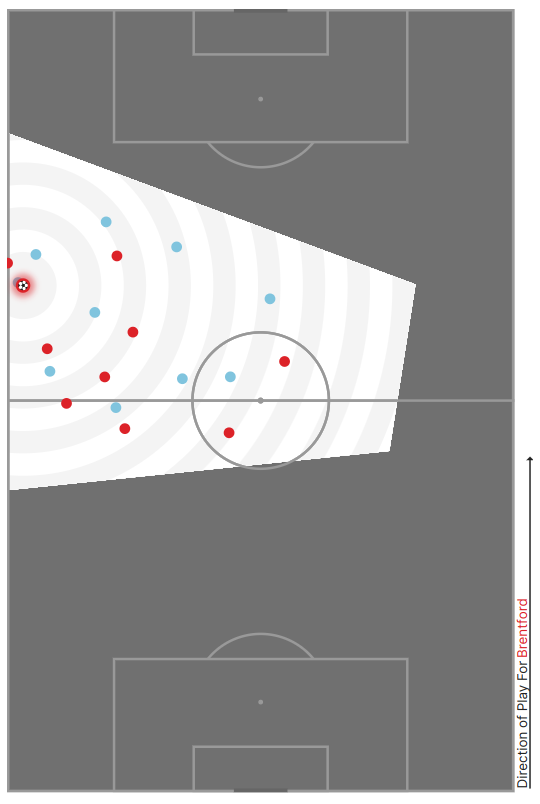
One final small aspect Brentford do well is they try and give Toney a decent chance of not having to head the ball. We know heading is hard, if you can avoid it that’s great! How can you do this? Keep the long balls as flat as possible - this gives strikers the chance to back into the defender, pin them and take the ball on the chest or even better control it with their feet. Raya rarely kicks out of his hands in this game which helps keep the long balls flatter - no one ever pumps up a crazy sky ball. This isn’t some silver bullet to make Route One work, Toney only manages to control 3 of the long passes into him with his chest/feet so we’re talking small margins here but every little helps.
Wrapping Up
We can summarise making Route One work as follows:
1. Have a target man to aim at - the better they are in the air the more chance of success you have.
2. Try to get favourable matchups for your target man.
3. Have players around your target man to pick up the 2nd ball - even if they don’t win the header you can still pick up possession with a good structure around the ball.
4. Don’t force it - if your striker is too isolated in open play look for other means of ball progression and stick to dead balls for going long.
5. Keep the balls into them flat so they have every chance of not having to head it.
Brentford do lots of the above against City but there’s obviously so much more to their victory than that. Route one is still a tricky means of ball progression - there’s a reason Brentford only do this against the sides they feel playing out from the back is too risky. You still need luck, you still need buy-in from your players and you still need to be brave. You might think Route One is the opposite of brave but pushing your wing back up alongside your striker from goal kicks to give your team a better chance of keeping the ball is quite brave!
It will be interesting to see what happens to Brentford without Toney next season against the teams they look to play long against - or whether they try to sign a forward with a similar profile to Toney in the transfer window. It will also be interesting to see what happens to the target man striker as the game constantly evolves.

